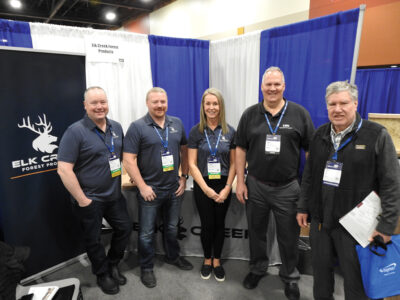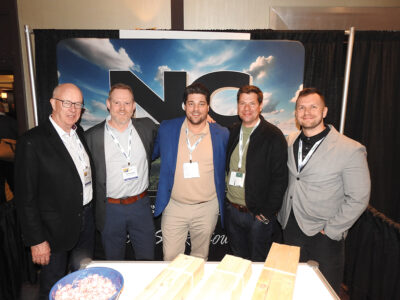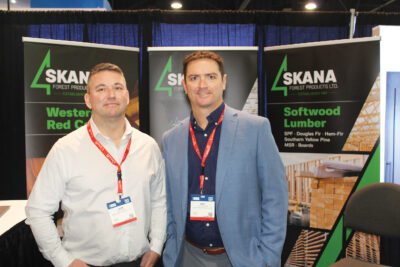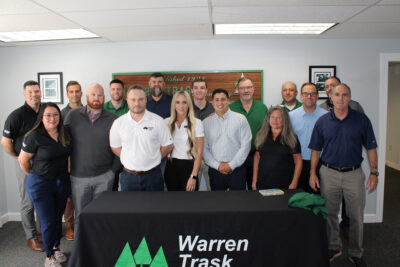Anaheim, CA–Ganahl Lumber, based here, has carved an enduring business using the philosophy of helping their customers succeed. It has resulted in tremendous sales. Ganahl’s 10 facilities in Southern California sold 172,943,043 board feet of lumber from November 2018 – October 2019.
The Softwoods—Douglas Fir, Redwood, Cedar, Pine, Radiata Pine, Sugar Pine and Cypress—made up 171,643,043 board feet of those sales. Red and white oak, ash, poplar, birch, walnut, maple, alder, cherry, and hickory comprised the domestic hardwoods that make up 1,300,000 board feet of the sales, along with some imports, like red balau, ipe, apitong and the mahoganies. Mainly upper grades are purchased, such as FAS and Select in hardwoods, with a small percentage of Nos. 1 and 2 Common in 4/4 poplar and red oak.
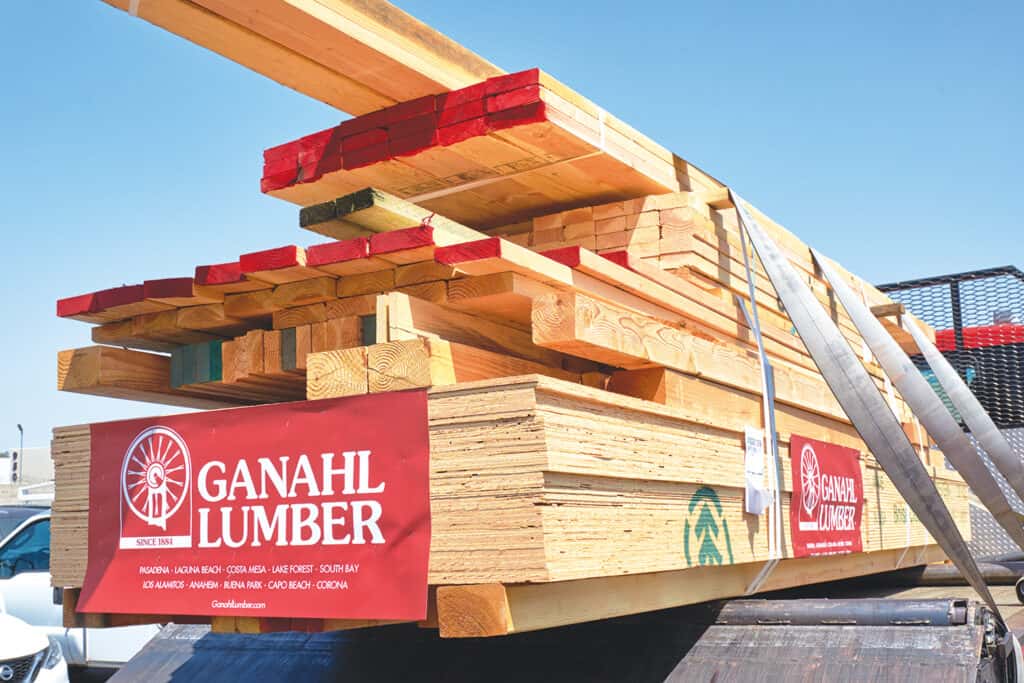
“We look for good quality companies that can help us become a better company with better products. We try to partner with people that have similar interests in operations to ours, and help us supply the right products for our customers so they can be successful.”
Deonn DeFord, lumber purchaser, Ganahl Lumber
Much of the finish lumber arrives rough; value-added milling at the Anaheim plant produces random-width and sized boards, hardwood plywood, solid Pine mouldings, and exterior trim. Ganahl’s lumberyards also have retail outlets for tools, paint, fasteners and hardware items, but lumber accounts for about 65 percent of sales. Total inventory of wood products at the end of fiscal 2019 was $34,511,032.
Deonn DeFord, one of three of Ganahl’s wood products buyers, purchases all hardwood lumber, moulding and hardwood panel products from mills, distributors, and wholesalers. He also purchases Clear Douglas Fir, Redwood, Cedar, fencing and exterior trim products and is also in charge of manufacturing stock solid moulding. “We have excellent relationships with vendors,” said DeFord. “We look for good quality companies that can help us become a better company with better products. We try to partner with people that have similar interests in operations to ours, and help us supply the right products for our customers so they can be successful. Then we turn that around and help our customers become better contractors, able to be a better businessperson for their customers, too. It’s a flow through the system, and it can’t happen without personal relationships. We push those quite a bit.”
About 80 percent of Ganahl Lumber’s customers are building professionals. Industrial contractors include entities like cities, counties, the state of California, the U.S. Army and U.S. Navy, and the Southern California theme parks. Concentrated in Southern California, customers are within a 10- to 20-mile radius around each store. Customers are able to call in their orders, special order materials, and have them delivered to the job site. The Ganahl truck fleet makes 200 to 300 deliveries daily.
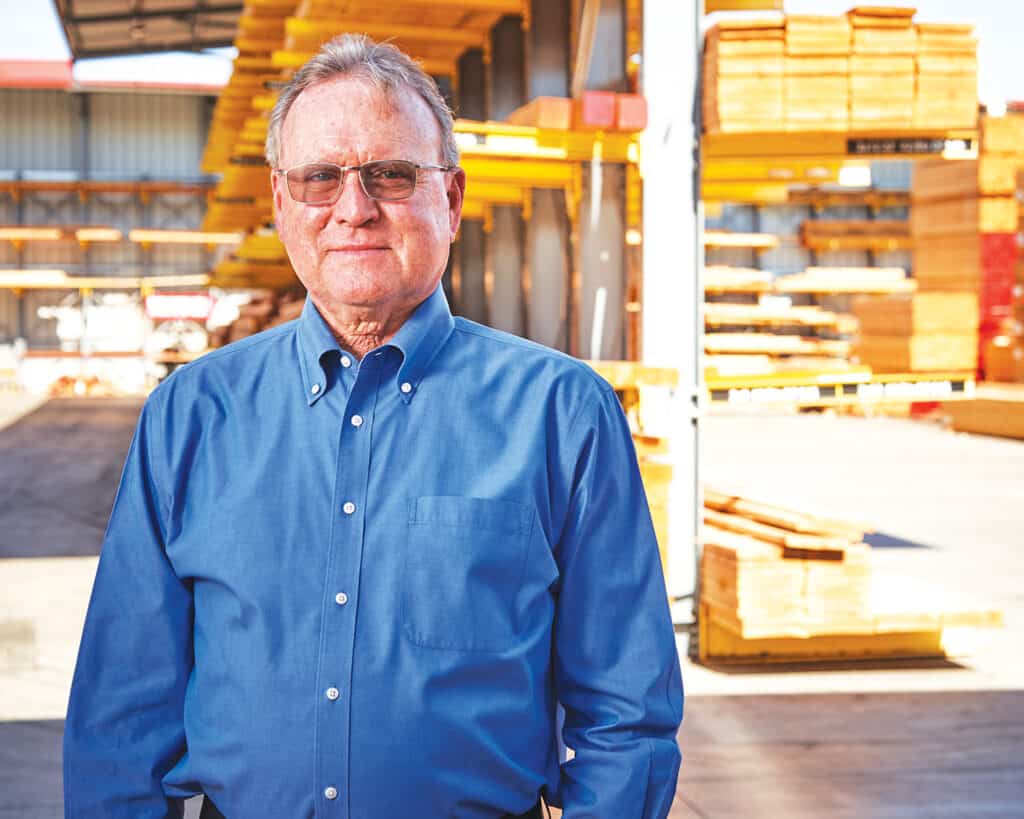
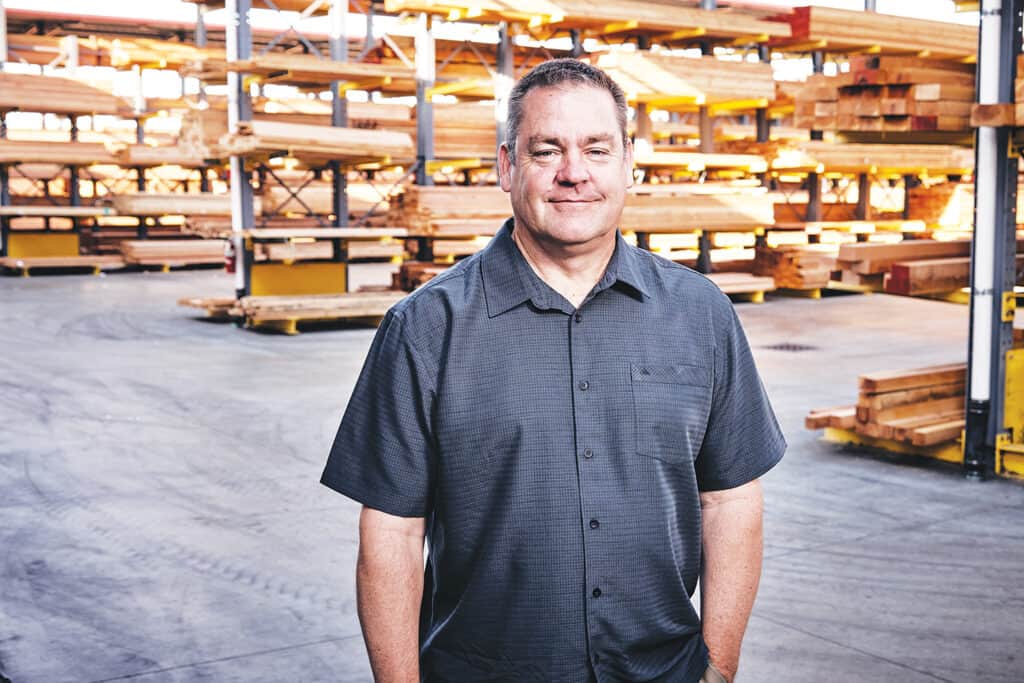
Christian Ganahl added the Anaheim yard in 1904 as he innovated a branch yard theory. The branches became more and more important. While at one point the Anaheim location produced more than 50 percent of the sales, Peter Ganahl projected that it would be a smaller portion of total sales over time. “It’s happened,” explained DeFord, “Our South Bay-Torrance is comparable in size, and over time will be comparable in sales. All yards are becoming a very important part of our profit. Each grows and contributes more and more each year.” Today the 10 locations include Anaheim, Buena Park, Capistrano Beach, Corona, Costa Mesa, Laguna Beach, Lake Forest, Los Alamitos, Pasadena and South Bay-Torrance.
Ganahl’s existing lumberyards are upgraded every 10 to 15 years. The Lake Forest yard was the most recent to get the renewal. Last year, Corona and Los Alamitos got upgrades. The Pasadena yard was built in 2013; the Torrance yard in 2017; the Costa Mesa yard in 2018. The company is projecting opening a lumberyard in San Juan Capistrano in 2022. “We look for ideal locations at which to add yards,” commented DeFord. “All the locations are lumberyards and stores; those that have been updated are 40,000 to 60,000 square-foot buildings. Most of our locations are drive-through lumberyards as well as hardware and building material stores. The yards are set up so customers can drive right up to the material, getting in and out quickly.”
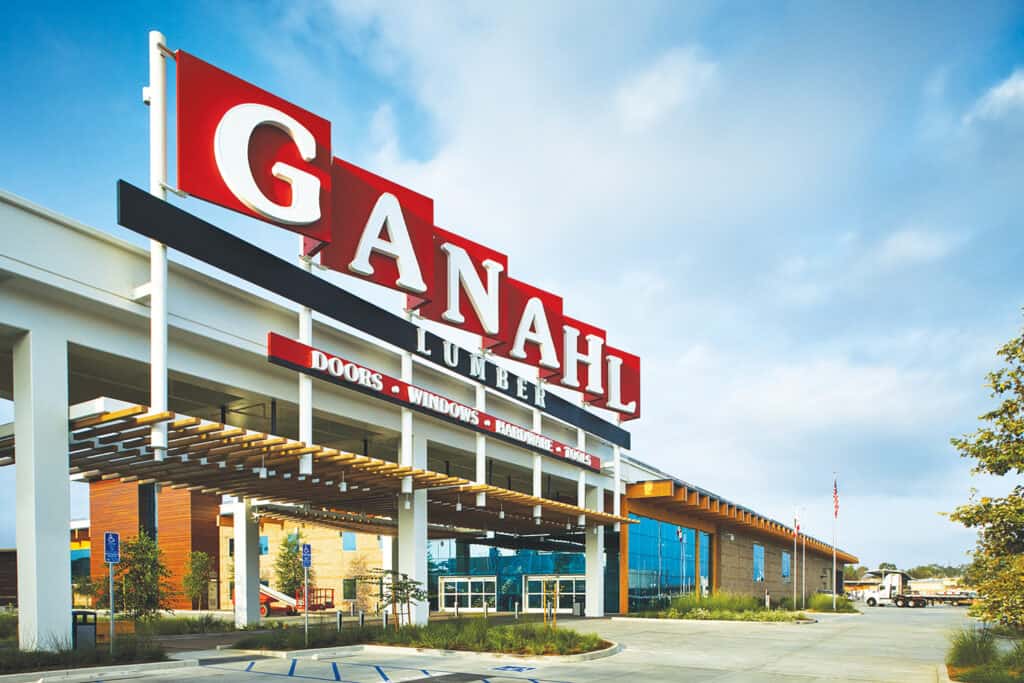
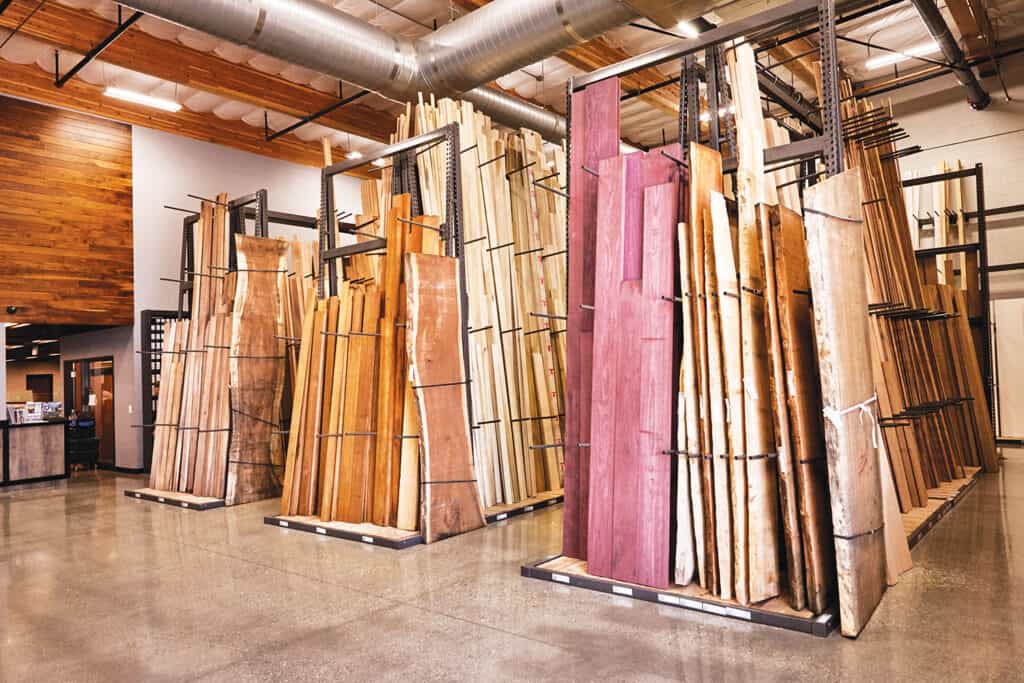
With regular upgrades, the company can implement new systems for customer service improvement and test them. One improvement is customer turn-around time. Time in and out of a lumberyard for materials is recorded by a scanning system. The yards post turnaround time every day, and some of the yards compete with how quickly they can get their customers into the yard and out to their job sites. Another improvement is rooftop parking, which began with the Pasadena yard. Reengineered beams provide support for plentiful customer and employee parking.
“In Torrance, we took a tip from Disney,” said DeFord. “All their employees are on stage and what runs the park is all backstage. Milling, receiving, getting trucks ready for deliveries, and all the material that supplies those functions are off the scene, away from the customer. The building, the drive-through sheds and the customer area is simply focused on the customers. They can get in and out without dealing with forklift traffic and guys pulling orders. That’s done behind the scenes.”
Employees stock shelves at night, using roller racks, an innovation that was tested at Anaheim and expanded to the other stores as a huge time-saver. The racks can be stocked behind the scenes and exchanged with near-empties, and staff can focus on helping the customers rather than stocking.
Another innovation is Ganahl’s use of video for branding. Maybe it’s the Southern California location that adds the verve to the videos about Ganahl, or maybe it’s the subjects themselves. The videos strive to capture the warm relationship between vendor, Ganahl, and customer and the spirit of innovation:
Videos
- Experience Ganahl Lumber
- LBM Storage Solutions – Ganahl Lumber Torrance, CA
- Ganahl Lumber Delivery
- Common Cents CitiCable Feature
Ganahl’s focus on the customer via personal relationships goes back to the company culture: a family atmosphere that includes management, employees, vendors and customers. The Ganahl family has led the company since 1884, when Christian Ganahl gave the family name to his Los Angeles lumber company. Four generations later, leadership is CEO Peter Ganahl, COO Brad Satterfield, and CFO Dan Delaney.
“Even with 900 employees, it’s still a family atmosphere,” noted DeFord. “The family is very involved in running the company. The employees own about 38 percent through an ESOP; we are vested in the company, so yearly we get our certificate of value and dividend payouts. Those are exciting. Peter and John Ganahl implemented the employee stock before I was hired, over 30 years ago.” Incentives and bonuses assure employees of their value.
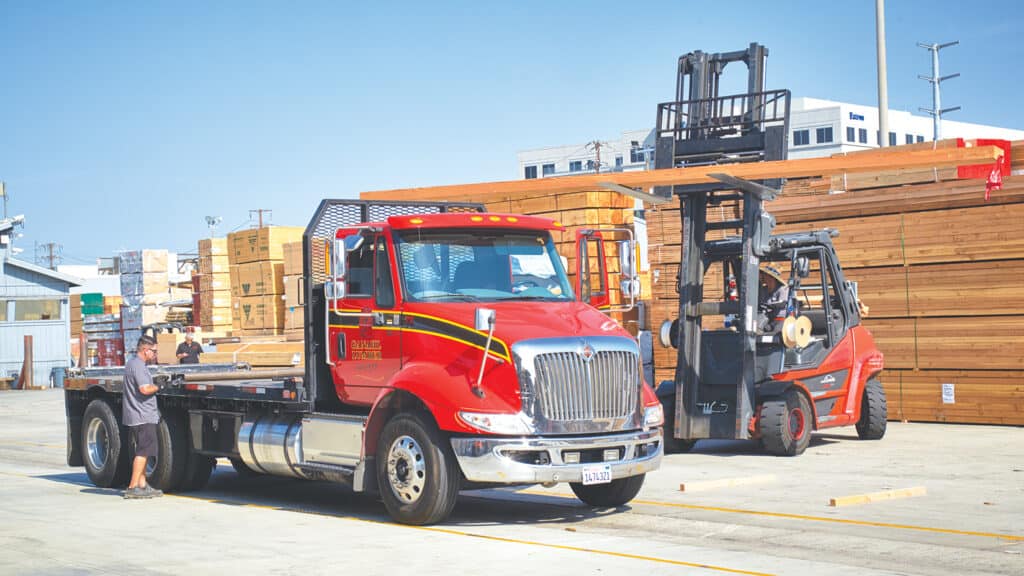
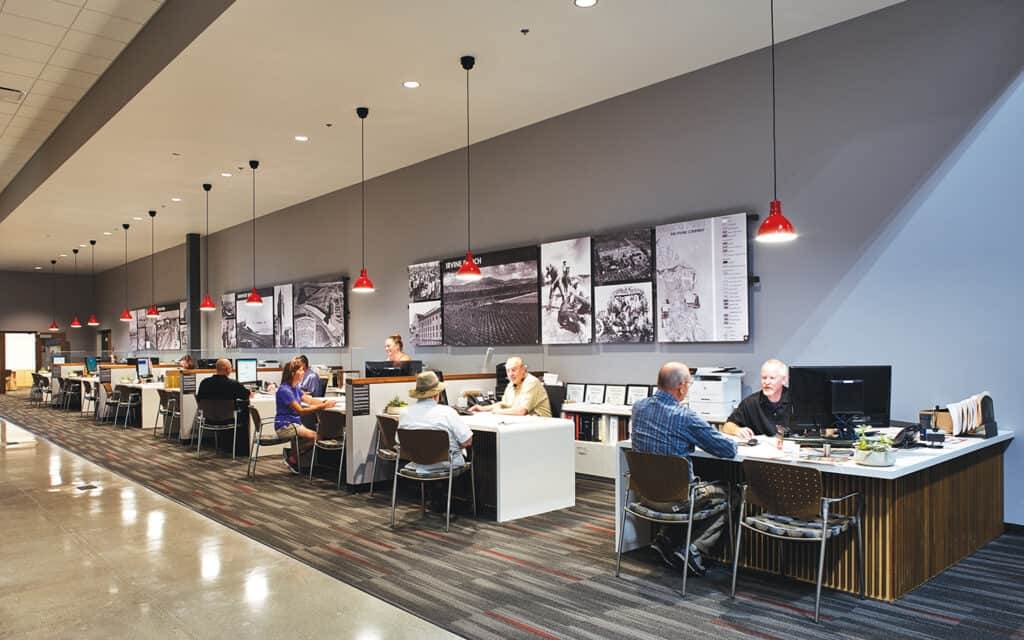
Assisting the industry as well as its customers, Ganahl is a member of many trade organizations, among them National Hardwood Lumber Assoc., Indiana Hardwood Lumbermen’s Assoc., International Wood Products Assoc., West Coast Lumber & Building Material Assoc. and West Coast Lumber Inspection Bureau. Several of Ganahl’s managers have been instrumental in developing the WCLBMA, especially in the Softwood area. Ganahl’s philosophy is to purchase the best products, sell the best products, and have a helpful, personal relationship with customers. “Our whole goal is to help our customers. We try to select vendors that help us be our best so we can do the same for our customers,” emphasized DeFord.
To learn more, visit www.ganahllumber.com.



